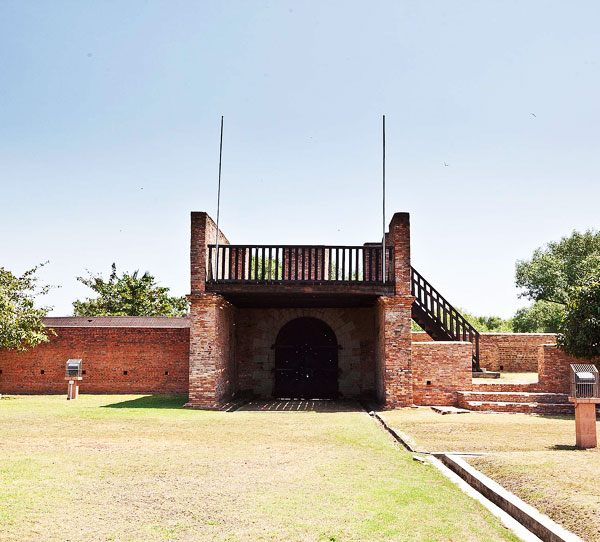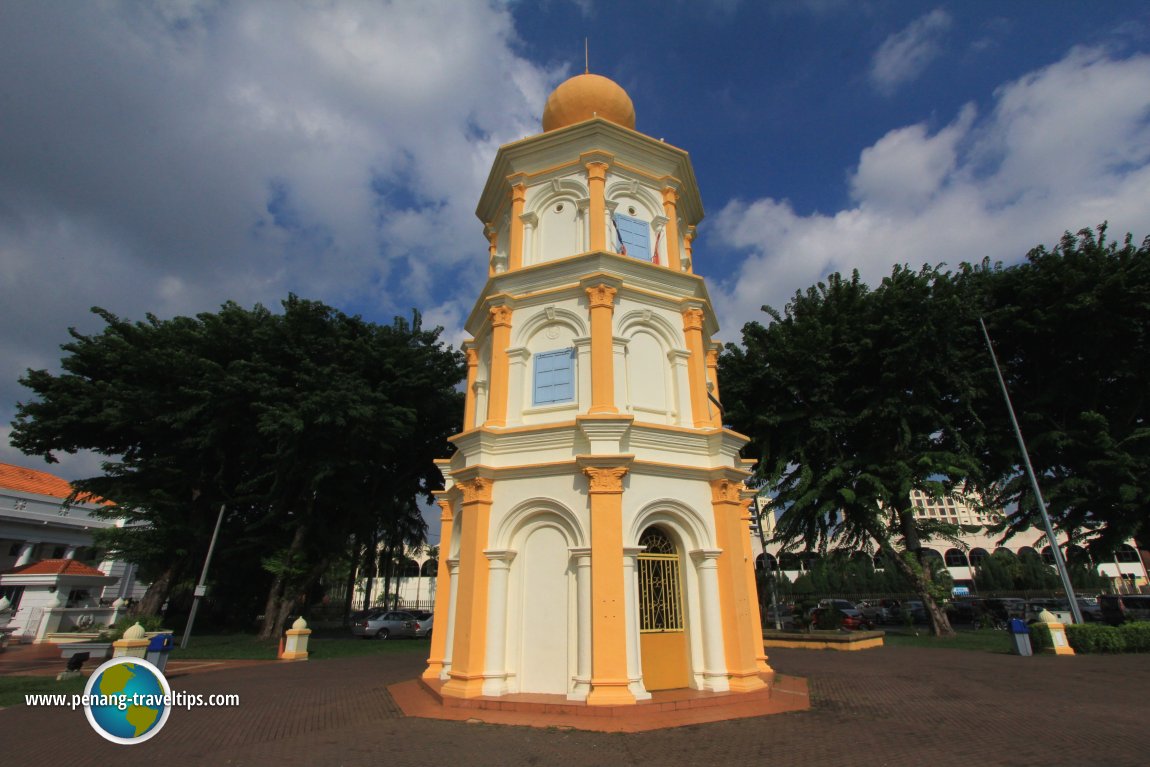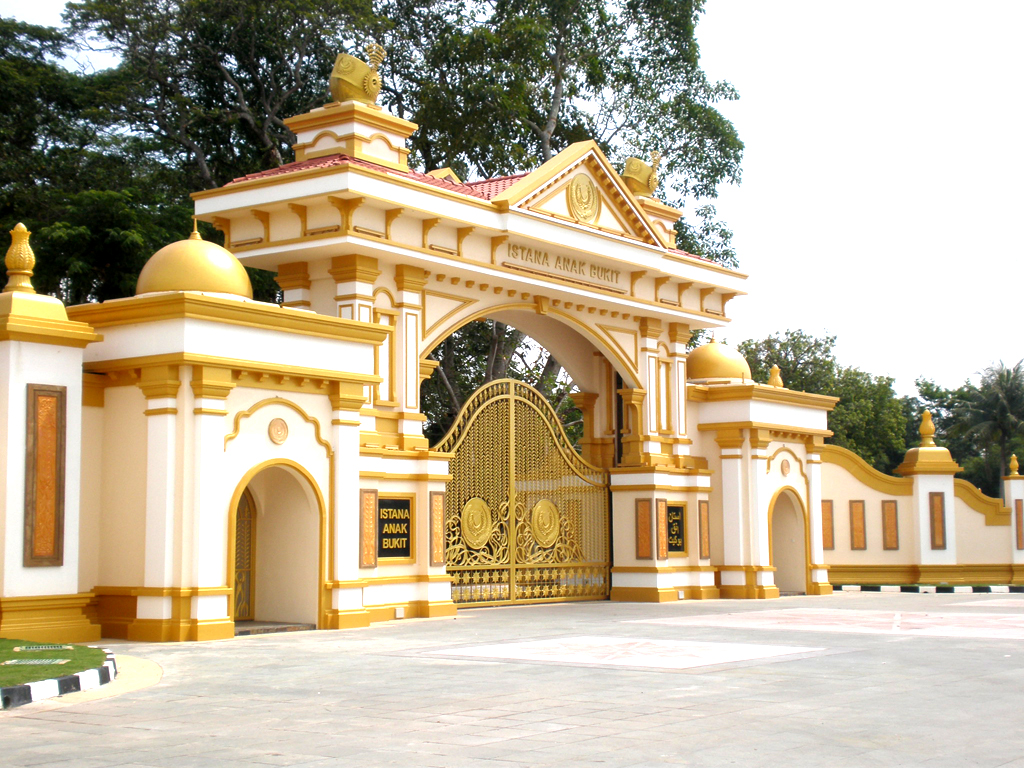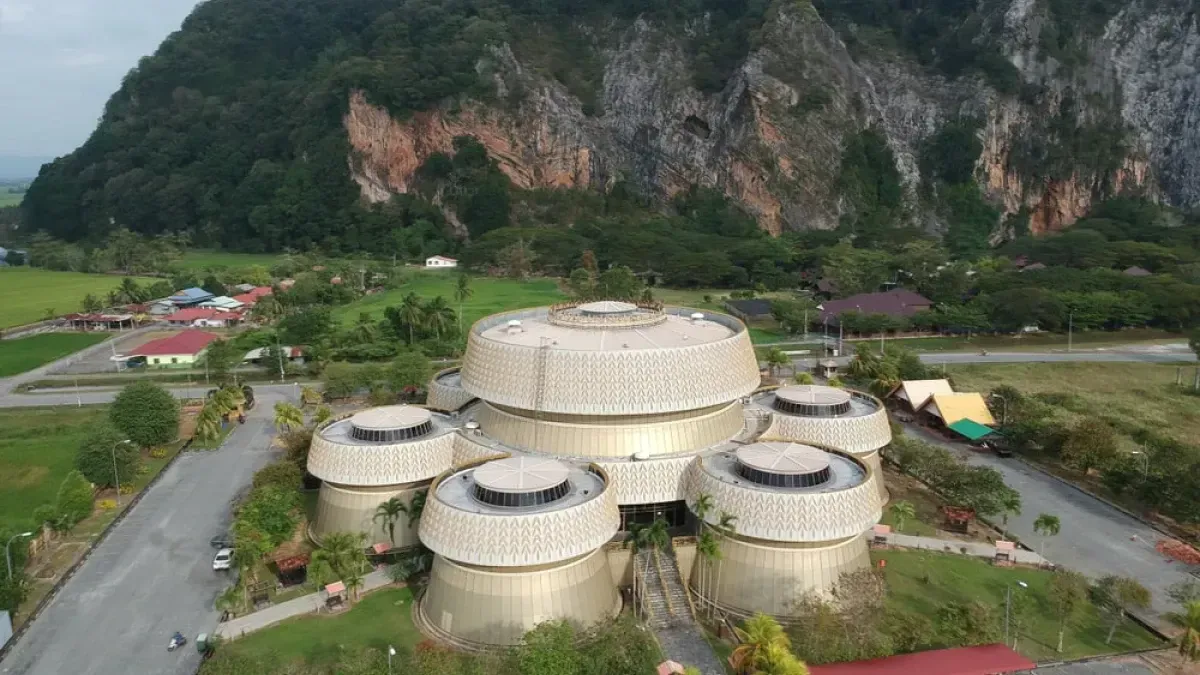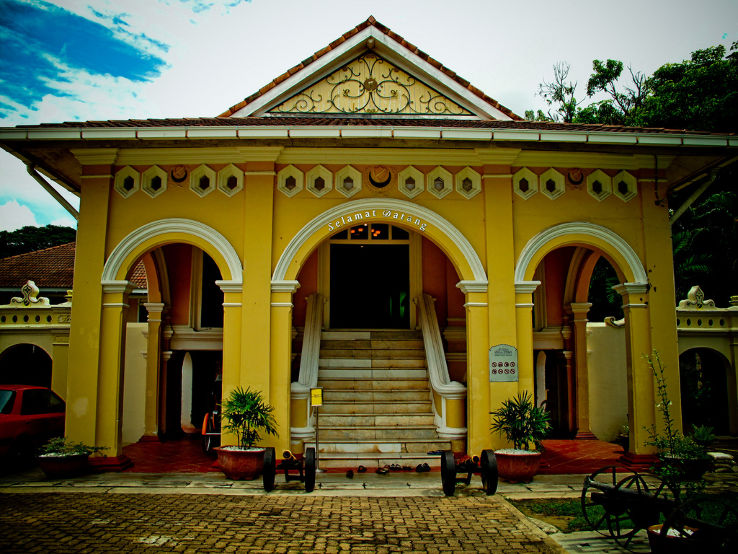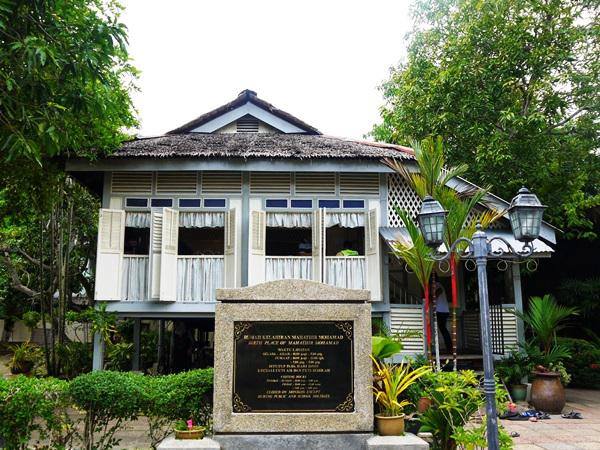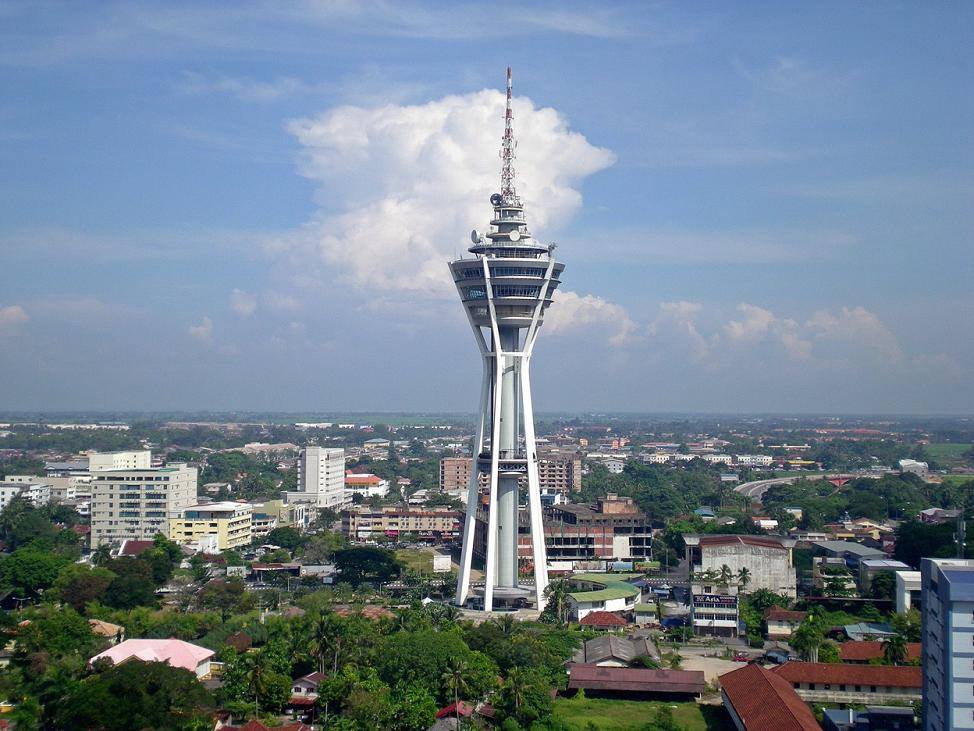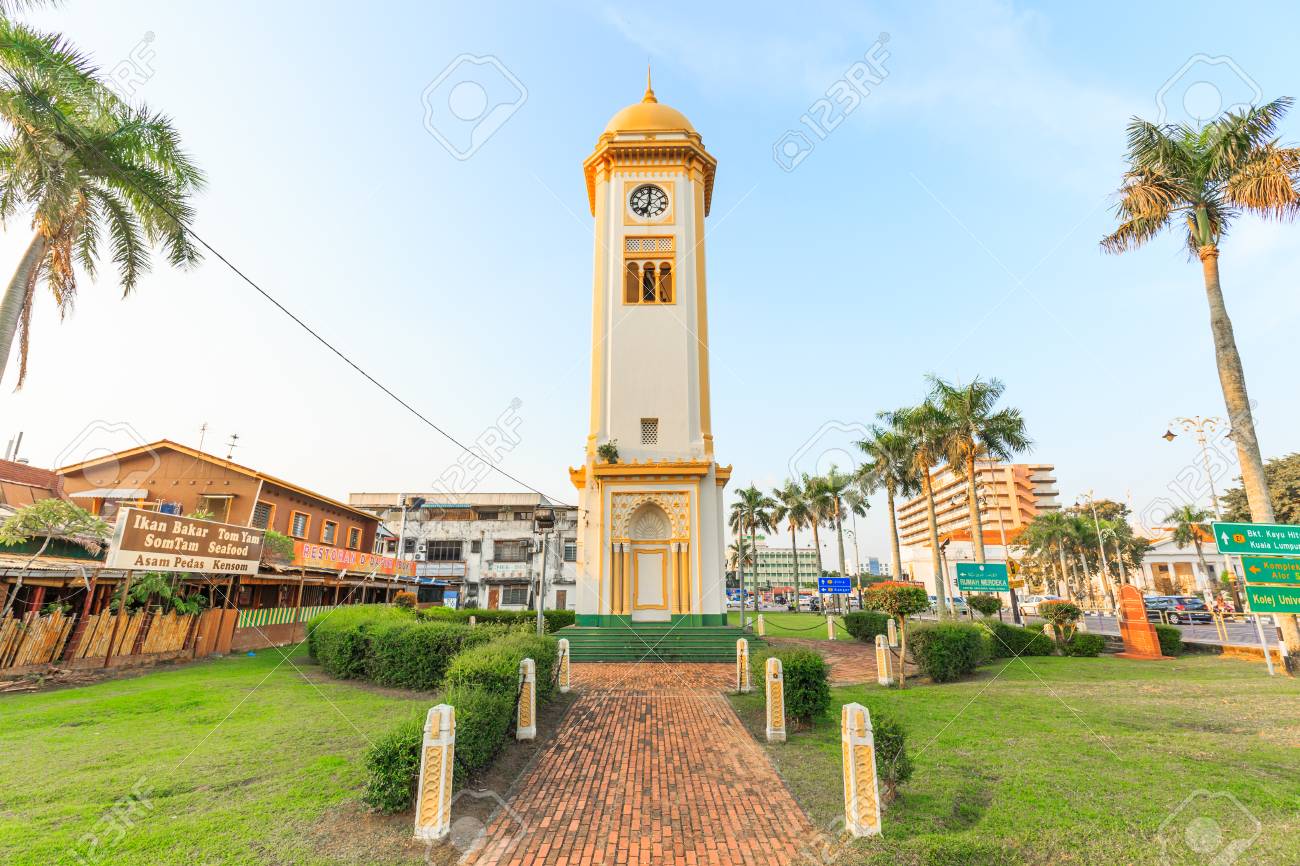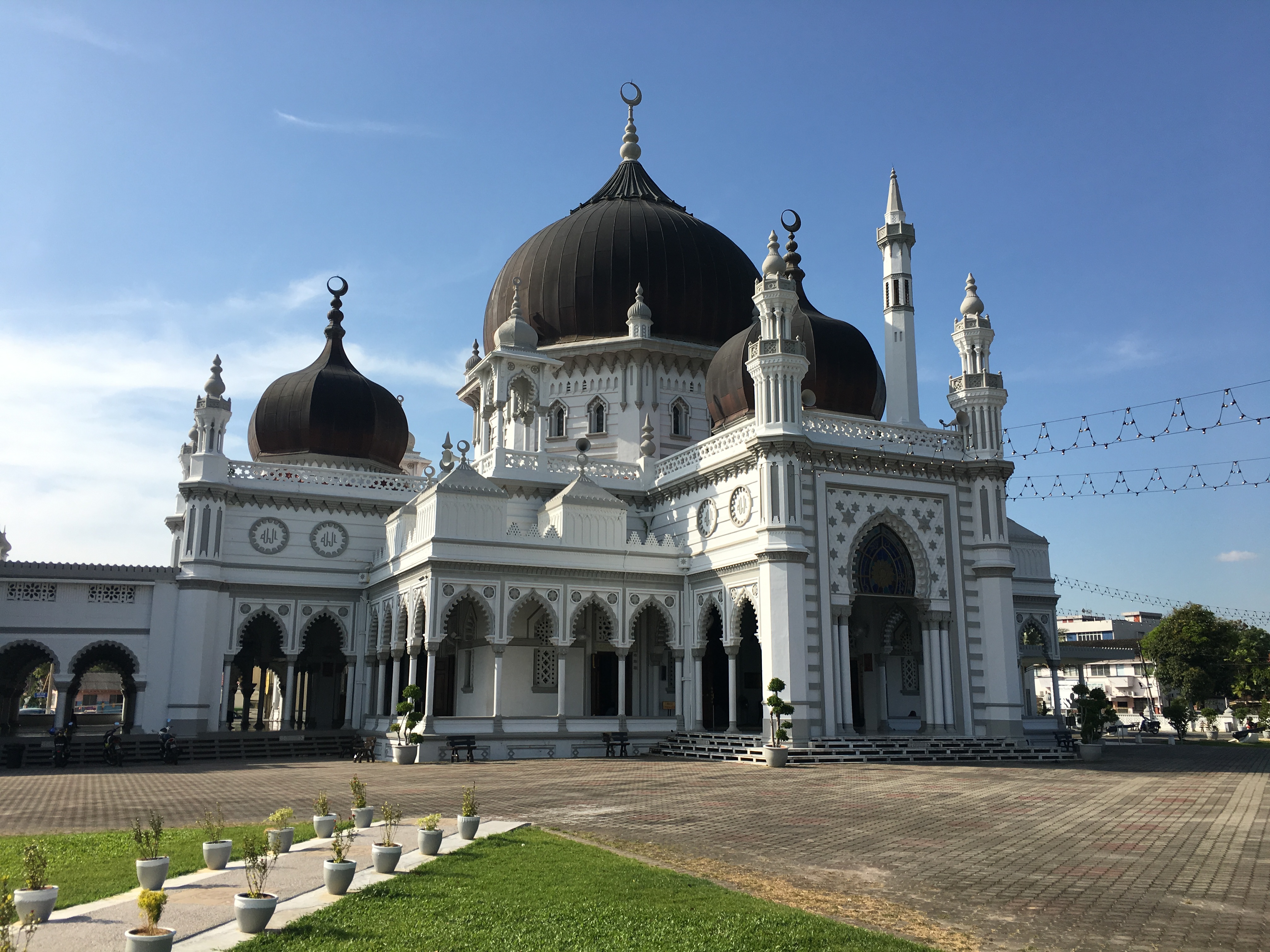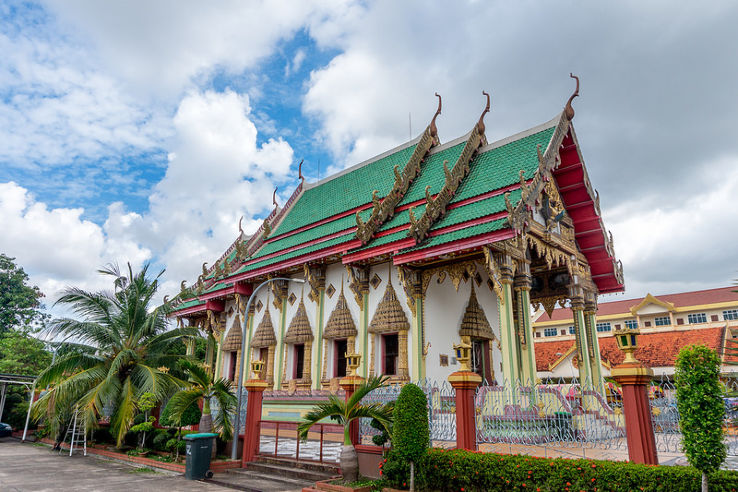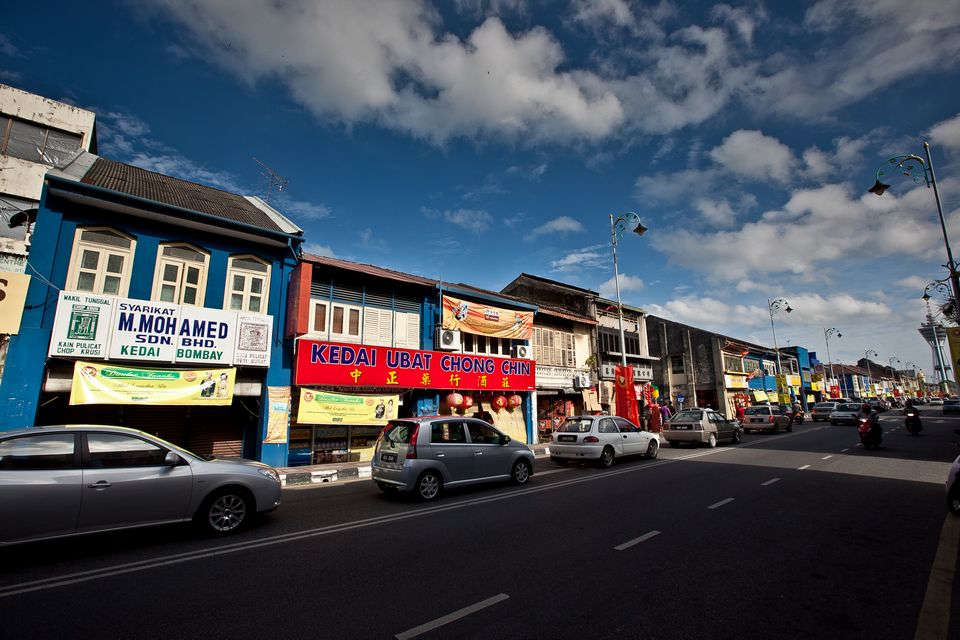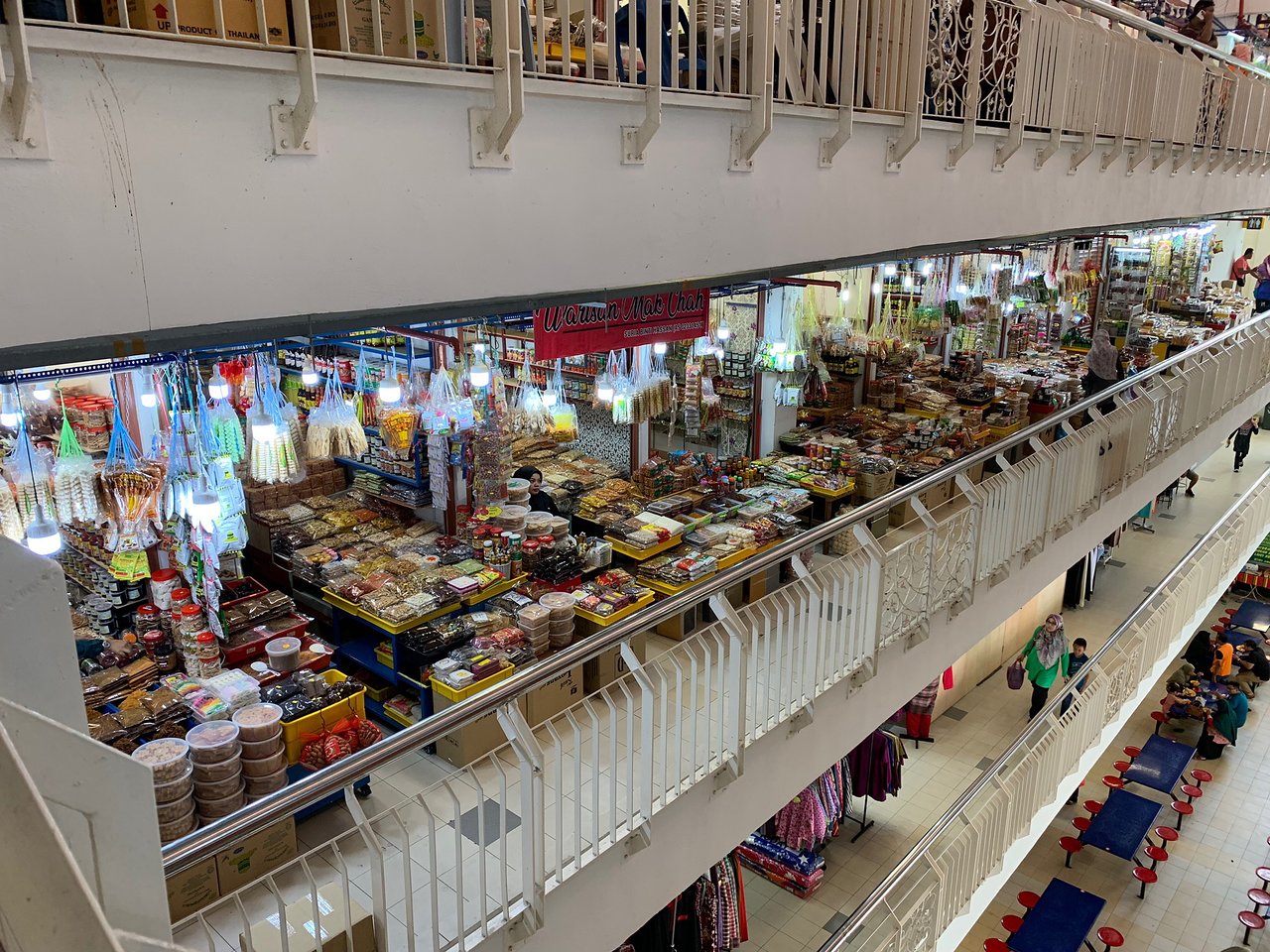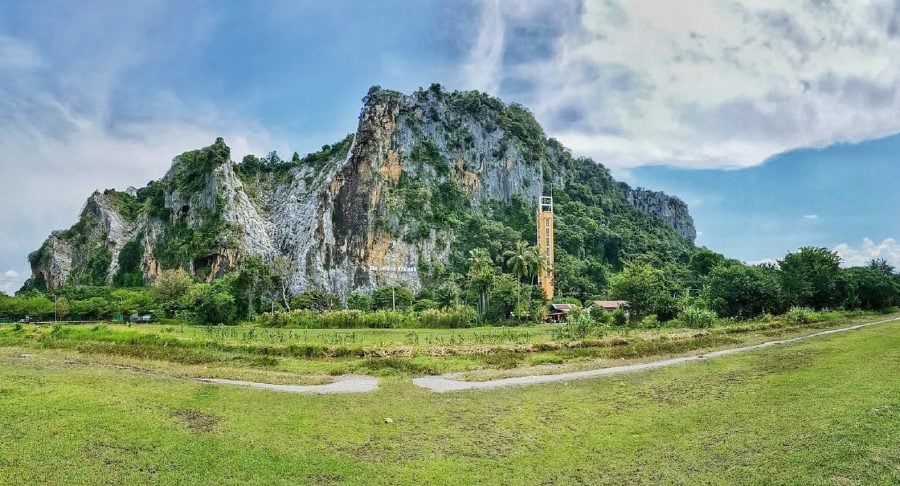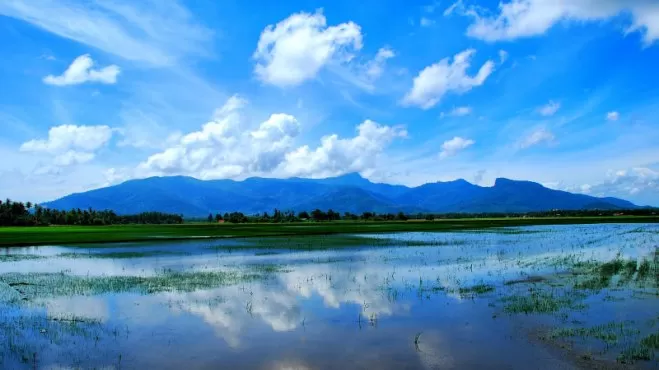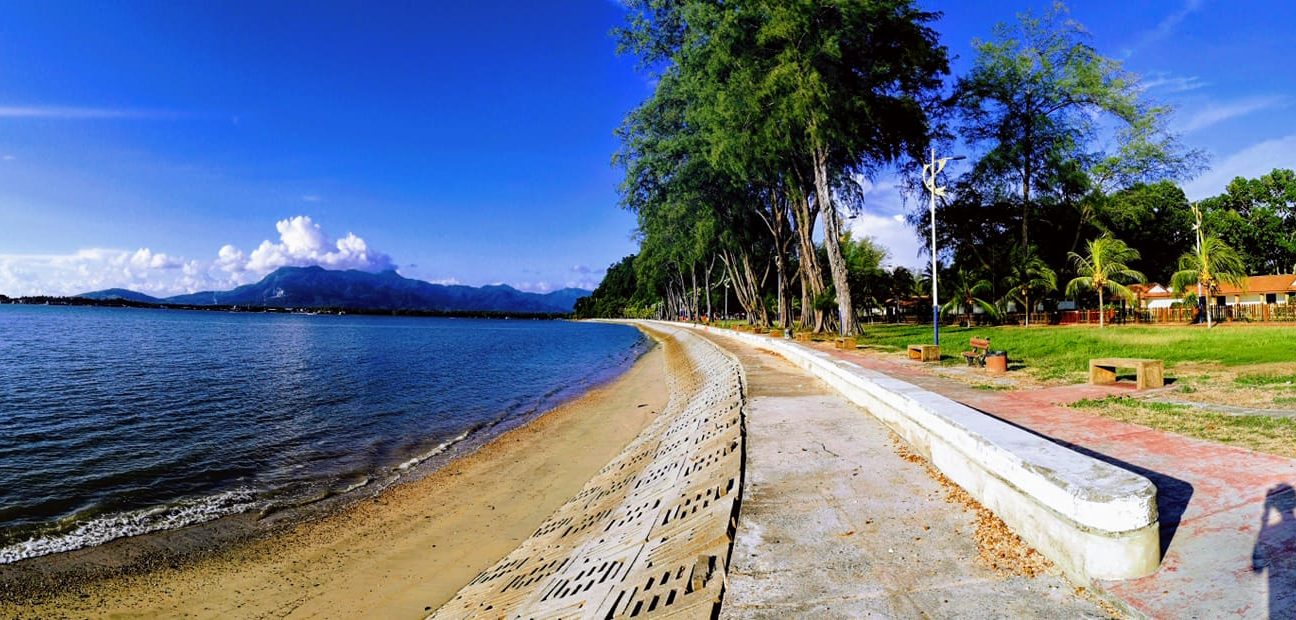Fort Kuala Kedah, also known as Kuala Bahang Fort, is a historical fort located at the northern facet of the Kedah River. Built in 1771 by Sultan Muhammad, it was initially used as a protection shield for Kedah state and Alor Setar. Rich in history, the fort has survived many battles and has been rebuilt after several destructions by Bugis, Acehnese, and Siamese. The prime entrance of the fort, Pintu Gerbang Kadapun, is grand, faces towards the north of Alor Melaka in a commanding position and has some government offices inside.
The fort is designed with vintage white timber and brick walls with embedded cannons. Primarily renowned as a tourist attraction for its museum, one can easily get to know historical facts about Kedah from it. The fort houses a white lighthouse too, which is surrounded by a picturesque garden, making the fort a must-visit for a short trip.
Initially built in the 17th century from clay, bamboo, and timber, Fort Kuala Kedah has faced many battles and turbulences. The fort has been rebuilt a lot of times with a stronger structure and a better design. In 1619, the Portuguese and Acehnese had a battle that destroyed the fort; however, the next generation of Portuguese rebuilt the fort. In 1770, the Bugis army attacked the fort again in a rival action against the Portuguese, who took the help of the East India Company to win against the Bugis and gave Penang Island to the East India Company as remuneration for help. The British East India Company rebuilt the fort with the help of Indian labourers; however, they were unsuccessful in protecting it against the Siamese. The last destruction of the fort happened in 1821 and the fort was finally built for the last time in 1838. Closed on Mondays, the fort is open from 9 am to 5 pm on Tuesday through Sunday. There is free street parking available.
Istana Kuning, or Yellow Palace, used to be the royal palace during the Kutaringin Sultanate. There are four buildings within the palace compound, with yellow, the royal colour, being the colour scheme. With a big chunk of the palace compound being taken over to construct a public garden, the compound is a lot smaller than it used to be.
Balai Besar, or Balai Penghadapan or Grand Audience Hall, is a royal audience hall that was initially built at the back of the Kota Setar Palace complex. The original building was built in 1735 by Sultan Muhammad Jiwa Zainal Adilin II, the 19th Sultan of Kedah. The pillars, roofs and floors were made of wood. Two Kedah sultans were officially installed at the Balai Besar: Sultan Ahmad Tajuddin Halim Shah II in 1805, and Sultan Abdul Halim in 1959. Balai Besar not only features traditional Malay architectural features but it also showcases Victorian and Thai architectural elements. The roof of the hall is adorned with golden carvings and mirrors, whereas the pillars are adorned with iron lacework. Entrance to the hall is forbidden, but one can admire its beauty from the outside. The location of Balai Besar is considered to be quite strategic since it is surrounded by several other historical structures, namely the Kedah Royal Museum, Sultan Abdul Halim Mu’adzam Shah Gallery, Nobat Hall, the State Art Gallery and Zahir Mosque.
Balai Nobat, or the Hall of Drums, is an 18-metre-tall, three-tiered octagonal tower whose sole purpose is to house the royal musical instruments, including the serunai, or the wooden flute, the nafiri, gendang or the drum; and the nobat, or the gong. The original Balai Nobat, constructed of wood, was among the early buildings already completed when Alor Setar town was officially founded in 1735. It has been rebuilt twice, most recently in 1906, in concrete and metal with a dome representing the Islamic element. Located beside the Clock Tower, Nobat Tower rises to a height of about 59 feet and features a unique onion-shaped dome that is painted yellow. Today, the royal orchestra or nobat, is used only for ceremonial purposes. While entry inside the tower is forbidden, one can admire its beauty from the outside.
Istana Anak Bukit is the birthplace and royal palace of Sultan Tuanku Abdul Halim Muadzam Shah as well as of the current ruler, Sultan Sallehuddin. Sungai Anak Bukit, which is situated behind the royal palace, flows through Alor Setar and is connected by the Kedah River to Kuala Kedah. Since 2008, it has been used in royal ceremonies, replacing the old Balai Besar, and is where Sultan Sallehuddin was officially enthroned and installed.
Istana Sepachendera, or the Sepachendera Palace, is a palace constructed for Che Sepachendera, Sultan Abdul Hamid Halim Shah’s first consort, in 1882. As Che Sepachendera is from Siam, visible elements of the Siamese architectural style were incorporated throughout the building. The palace grounds are currently abandoned; however, there are plans to restore the complex into a museum.

The National Science Centre Northern Region Branch or Pusat Sains Negara Cawangan Wilayah Utara, abbreviated as PSNCWU, is located at Gunung Keriang next to the Alor Setar Aquatic Centre and Paddy Museum. It is the first science centre built in northern Malaysia.
The Paddy Museum, or Muzium Padi, is the first paddy museum in Malaysia, and the fourth in the world after Japan, Germany and the Philippines. The museum showcases the rice cultivation process in Malaysia and the tools and equipment used. Established in 2004, it is a one-stop destination to learn everything, from paddy cultivation to its history and processing, in an engrossing manner. The museum sprawls over an area of 12,000 sq m in a three-storey space, exhibiting harvested rice stalks, motifs, rice murals, etc. The staircase at the entrance is made in a cave shape inspired by the Gunung Keriang caves, giving a beautiful view. The must-see part of the museum lies on the first floor, which has a 360-degree revolving platform with forty cinema seats to explore the panoramic view of the murals. Painted by 60 North Korean artists, the murals will give one a realistic feel of the paddy fields and landscapes of Kedah. The museum is open from 9 am to 5 pm daily, except on Friday, when it is open from 9 am to 12:30 pm and then from 2:30 to 5 pm. Entry fees are RM 3 for adults and RM 1 for children up to the age of 12. Free parking is available.
The Kedah State Art Gallery or Balai Seni Negeri Kedah in Malay, was set up to foster interest in and appreciation of art in the state. Its collection includes paintings, photographs, musical instruments and handicrafts.
The Sultan Abdul Halim Mu’adzam Shah Gallery or the Galeri Sultan Abdul Halim Mu’adzam Shah originally housed the Alor Setar High Court, before it was moved to Kompleks Mahkamah Alor Setar in Suka Menanti. This building is located at the junction of Jalan Putera, adjacent to the Balai Nobat. The museum offers a glimpse into the life of the former ruler of Kedah, Sultan Abdul Halim, with artefacts from his life such as official documents, clothing, antique furniture and personal possessions on display.
Open daily and with free entry, the Kedah State Museum or Muzium Negeri Kedah, is a storehouse of the state’s history, from the Bujang Valley civilization to colonial times. The collection includes early Chinese porcelain, artefacts from the archaeological excavations in Bujang Valley, and a pokok bunga emas or ‘gold tree’ produced as a tribute to the Thais. The museum is also a research centre that specialises in Kedah’s cultural history. On display are artefacts such as ancient ceramic and porcelain and items belonging to the royal family. Before the present premises were built in 1936, parts of the museum’s collection were on display at the Balai Besar. The museum was officially opened on February 3, 1957. The museum is open from 10 am to 6 pm daily.
The Kedah Royal Museum or Muzium Diraja Kedah, had originally been part of the Kota Setar palace. It was rebuilt after attacks by the Bugis in 1770 and the Siamese in 1821. The current concrete building was completed during the reign of Sultan Ahmad Tajuddin Mukarram Shah, who once stayed in this palace with his queen. This palace is also known as the Pelamin Palace after it was extended to include a pavilion and additional rooms when Sultan Abdul Hamid Halim Shah arranged the marriages of his five children. The grand wedding ceremony lasted for three months in 1904. After 1941, the palace was used as a school and an office for several organisations including the office for the St. John Ambulance and the Scout movements. On July 25, 1983, the palace was declared the Kedah Royal Museum.
The birthplace of Tun Dr Mahathir, the fourth and seventh Prime Minister of Malaysia, the Mahathir Birth House or Rumah Kelahiran Mahathir, has been designated as a historic building. Located off Jalan Pegawai, it was restored by the National Archives in 1992. This museum provides an insight into the life of the longest-serving Prime Minister of Malaysia, Dr Mahathir Mohamad, who was born in this house on December 20, 1925. The museum gives an account of his schooling years up until the time he became a doctor. Visitors can find old family photographs as well as the Prime Minister’s old bicycle inside the museum. The museum is also a great example of a typical traditional Malaysian house. The house is made out of wood and its roof is made from Nipah palm. Entry is free and the museum is open from 10 am to 5 pm daily.
Independence House, or Rumah Merdeka, is a designated historic building that houses the collection and memorial of Tunku Abdul Rahman, the first Prime Minister of Malaysia. It is owned by the National Archives.
Menara Alor Setar or Alor Setar Tower, is a 4-storey, 165.5-meter-tall telecommunications tower that is a prominent modern landmark and tourist attraction, offering a panoramic view of the city and surroundings. It is the third tallest telecommunications tower in Malaysia, with a popular observation deck. A mega-view banquet hall, a revolving restaurant, and an open deck are also housed inside the tower. The structure of this tower represents clusters of tied rice. The large pillar that supports this sky-high tower represents the strength of the people of Kedah. Alor Setar Tower is generally visited during the holy months of Ramadhan, Shawwal, and Zulhijjah, during which people look for the crescent moon in the sky. The tower is open daily between 10 am and 10 pm and entry fees are RM 6 for adults and RM 3 for children. The open deck entry fees are RM 48 for adults and RM 28 for children, while to enter the observation deck, adults need to pay RM 12 and children between 4 and 12 need to pay RM 8.
The Menara Jam Besar or Big Clock Tower, was opened in 1912, with its chimes calling people to prayer. The golden yellow and white exteriors showcase a mix of Islamic and Hindu architectural styles. The upper part of the tower has a crowning dome with a crescent atop it, while in the lower half, Islamic and Hindu styles converge. The tower is located near Zahir Mosque.
Zahir Mosque is one of the oldest and grandest mosques in Malaysia and is considered one of the 10 most beautiful mosques in the world. Kedah’s state mosque, Masjid Zahir’s history dates back to the early 1900s and its five black domes, unique colour combinations and intricate carvings make it a true sight to behold. The mosque spans an area of about 1,15,000 sq m. The mosque was conceived by the late ruler Sultan Muhammad Jiwa Zainal Abidin II who was inspired by the design of the Azizi Mosque of the Langkat Sultanate in North Sumatra. The mosque was built upon the tomb and grave of the fallen Kedah warriors who died during the Siamese invasion of Kedah. The state’s annual Qurʾān-reading competition is held within the premises of the mosque. Zahir Mosque is built in the Moorish architectural style. The largest dome of the mosque is surrounded by five small domes, which represent the five pillars of Islam. The interior of the dome is carved with verses from the Quran. The beige and black wash of the exterior, paired with white and blue interiors,, presents a unique colour combination that is quite rare to find. The entrance of the mosque is decorated with intricate blue glass mosaic patterns, which further accentuate the beauty of the structure. Visitors must be covered from shoulder to knee, and everyone is required to cover their heads. The first prayer time is at 6 am while the last prayer time is at 9 pm.
One of the oldest Buddhist temples in Alor Setar, Wat Nikrodharam, is built in a magnificent fusion of Thai and Chinese architecture with fascinating statues and sculptures. The interiors are well-designed with wonderful art and paintings, along with a Buddha statue and other religious relics. The temple has a rather large, peaceful area where visitors are free to roam around and admire the general splendour.
The Wan Mat Saman Canal or Aqueduct, is the longest aqueduct in Malaysia that connects the Kedah River in Alor Setar to Gurun in the south and was built to boost the state’s rice production. Stretching for a few hundred metres along the southern part of Chinatown, the Alor Setar Waterfront features a park next to the Kedah River. Visitors can spot the Lighthouse Cape Chali from the park and kayakers on the rivers. In addition, there are restaurants on the waterfront, such as Jeragan Waterfront Restaurant, which lets diners enjoy views of the river.
Among the most preserved Chinatowns in Malaysia, Alor Setar’s Chinatown transports visitors to the 1950s. Restored shops line the narrow streets, and houses have their own unique style and decoration. The houses are two-storeyed, with living quarters upstairs and workshops on the ground floor. Occupants of the houses perform their family trades with printing shops, bicycle repair shops and hardware stores in the area.
Pekan Rabu, which means Wednesday Market, is a shopping centre located in the middle of Alor Star. The Pekan Rabu Complex originally started as a flea market but has grown into a multi-storey shopping arcade that sells handicrafts, apparel, and local delicacies. The complex is one of the best places to try local dishes such as serunding, kuah rojak and garam belacan. Everything on sale is locally produced, and the complex is a source of pride for the local economy.
Gunung Keriang, also known as Mount Keriang, is an old mountain range that is northwest of Alor Setar. At an elevation of 218 m, the 250 million-year-old mountain is shaped like an elephant and is mostly composed of limestone, with some distinctive features like the presence of ten different rocks renowned for Fung-Shui in a single place. The place is famous among tourists and is expanding slowly.
There are many caves in Gunung Keriang, with one of the larger ones being Gua Keriang. The Gunung Keriang Recreational Park is a pretty landscaped area that is popular among locals and tourists. Filled with exotic flora and lush green areas, there is a small lake and a bridge in the park. One can do many adventure activities, like rock climbing, trekking and even camping. Gunung Keriang is open from 8 am to 6 pm daily.
Mount Jerai or Gunung Jerai in Malay, formerly named Kedah Peak, is a mountain in Kedah standing at a height of 3,993 feet. It is known as the Hausberg of the town of Sungai Petani. Mount Jerai is part of an eponymous geological formation that correlates with the Machinchang Formation on the island of Langkawi. The Jerai Formation was originally a sedimentary formation composed of fully metamorphosed sandstone and shale, and it consists of argillite, arenite and porphyry facies. There is an information board on top of the mountain stating that it used to be an island called Pulai Serai before the sea levels receded, letting it form a mountain. This is probably supported by I Ching’s record of Pu Lou Shi or Pulau Sri, a country located west of Sribogha. The summit of Jerai has been developed into a hill resort, and tourists can enjoy a wide-angle view of the surrounding areas, including Penang Island and the rice fields of Yan District.
Pantai Merdeka is the only sand beach in mainland Kedah, and it is a major attraction for beachgoers from all over northern Penang and Kedah. In the early 1970s, the beach attracted swimmers, picnickers and campers from Kedah and the city of Seberang Perai. Subsequent sea erosion made the beach less popular and visitors were lost to the newly-developed beaches at Pantai Murni in Yen and Pantai Bersih in Butterworth. In 1989, facilities at the beach were upgraded and the seawall along the 760-meter shoreline, originally built in 1975, was subsequently replaced. A ferry boat across the Merbok River links Pantai Merdeka to the small town of Tanjung Dawai, which is otherwise 80 km by road. The beach is a popular local picnic spot. Wild monkeys from the nearby forest have been observed to visit the beach to scavenge from the litter bins. The nearby forest is popular with jungle trekkers.


